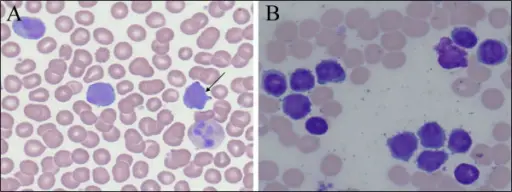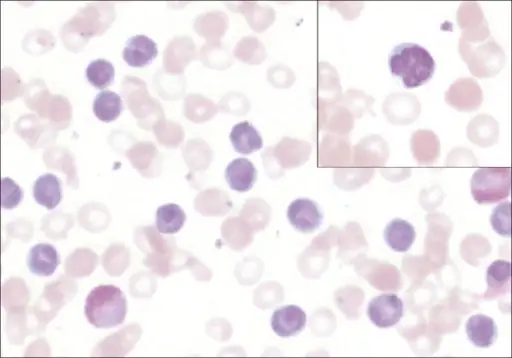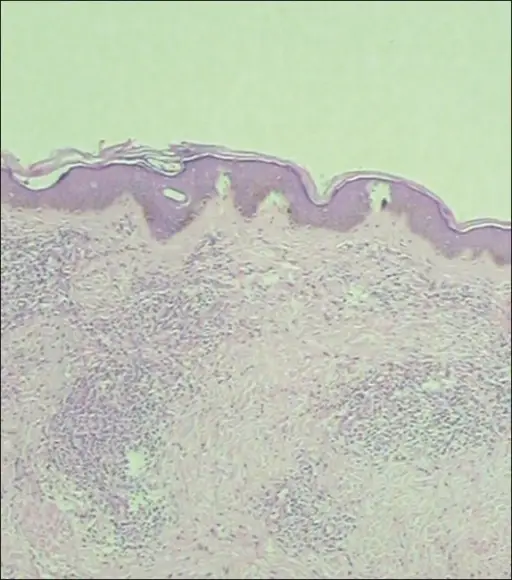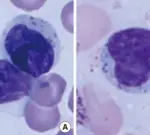T-cell prolymphocytic leukemia is an aggressive T cell leukemia comprised of small to medium sized mature T cells with high white blood cell count and widespread organ involvement.
What is the Pathology of T-Cell Prolymphocytic Leukemia?
The pathology of t-cell prolymphocytic leukemia is:
-Etiology: The cause of t-cell prolymphocytic leukemia is unknown but studies suggest patients with ataxia-telangiectasia are at higher risk.
-Genes involved: AKT.
-Pathogenesis: The sequence of events that lead to t-cell prolymphocytic leukemia include combination of overexpression of TCL1 family of proteins (this stimulate AKT/protein kinase B driven proliferation) and functional deficit of ATM protein.
-Histology: The histology associated with t-cell prolymphocytic leukemia shows perivascular and diffuse tissue infiltrates of uniform small to medium sized lymphocytes.
How does T-Cell Prolymphocytic Leukemia Present?
Patients with t-cell prolymphocytic leukemia typically presents in the adults and elderly >30 years with a median age of 65 years with no gender predilection. The symptoms, features, and clinical findings associated with t-cell prolymphocytic leukemia include prominent constitutional symptoms of weight loss, fatigue, night sweats, fever and body malaise, cytopenias with bone marrow involvement, hepatosplenomegaly, lymphadenopathy and skin and mucosal lesions. Patients with high tumor burden have high WBC count.
How is T-Cell Prolymphocytic Leukemia Diagnosed?
T-cell prolymphocytic Leukemia is diagnosed by bone marrow or solid tissue biopsy of the involved organ (lymph node, spleen, liver, skin) and analyzing its morphology. Peripheral blood morphology, flow cytometry and variable fluorescent in situ hybridization may help in its diagnosis.
How is T-Cell Prolymphocytic Leukemia Treated?
T-cell prolymphocytic Leukemia is treated by alemtuzumab, an anti-CD52. BCL2, JAK3 or HDAC inhibitors were used as experimental therapies.
What is the Prognosis of T-Cell Prolymphocytic Leukemia?
The prognosis of t-cell prolymphocytic leukemia is poor with a median survival of 1-2 years on patients with active disease.









